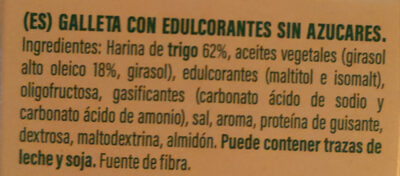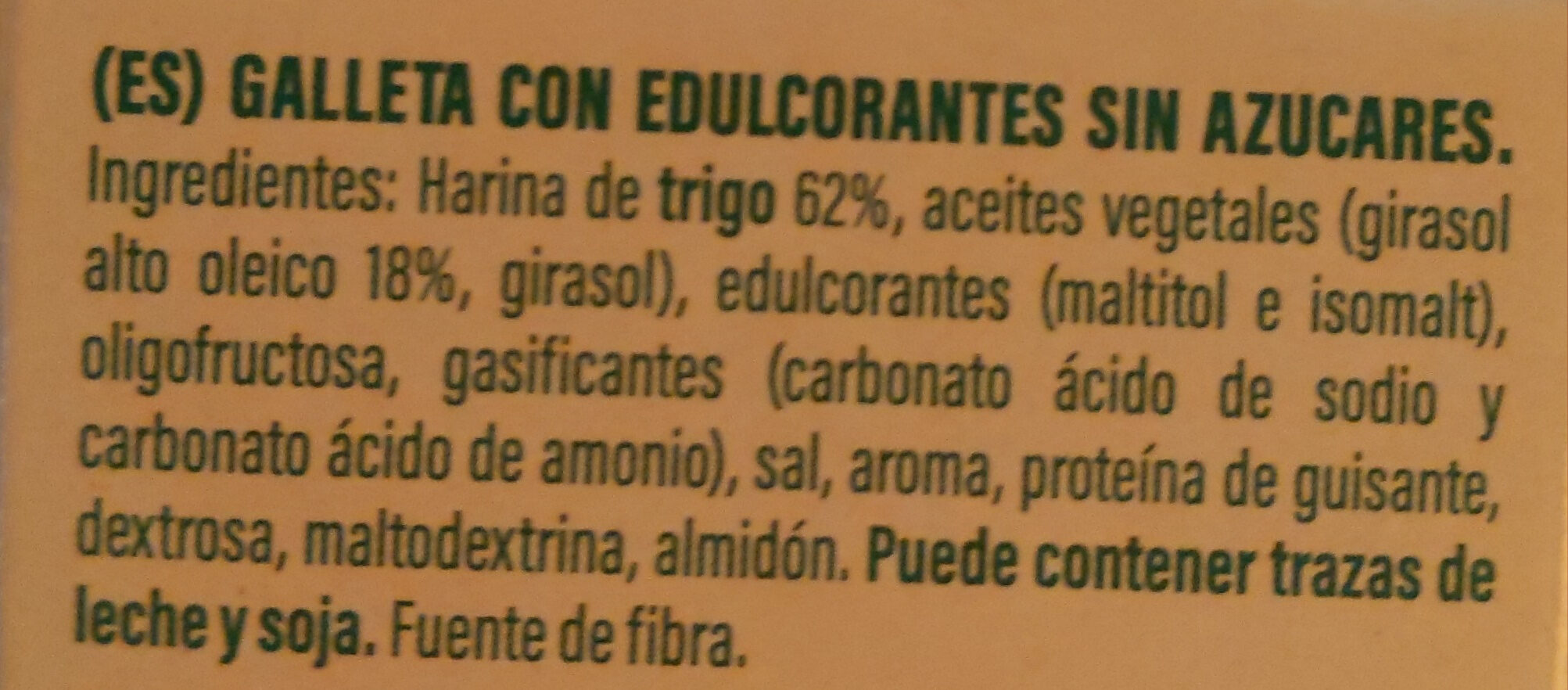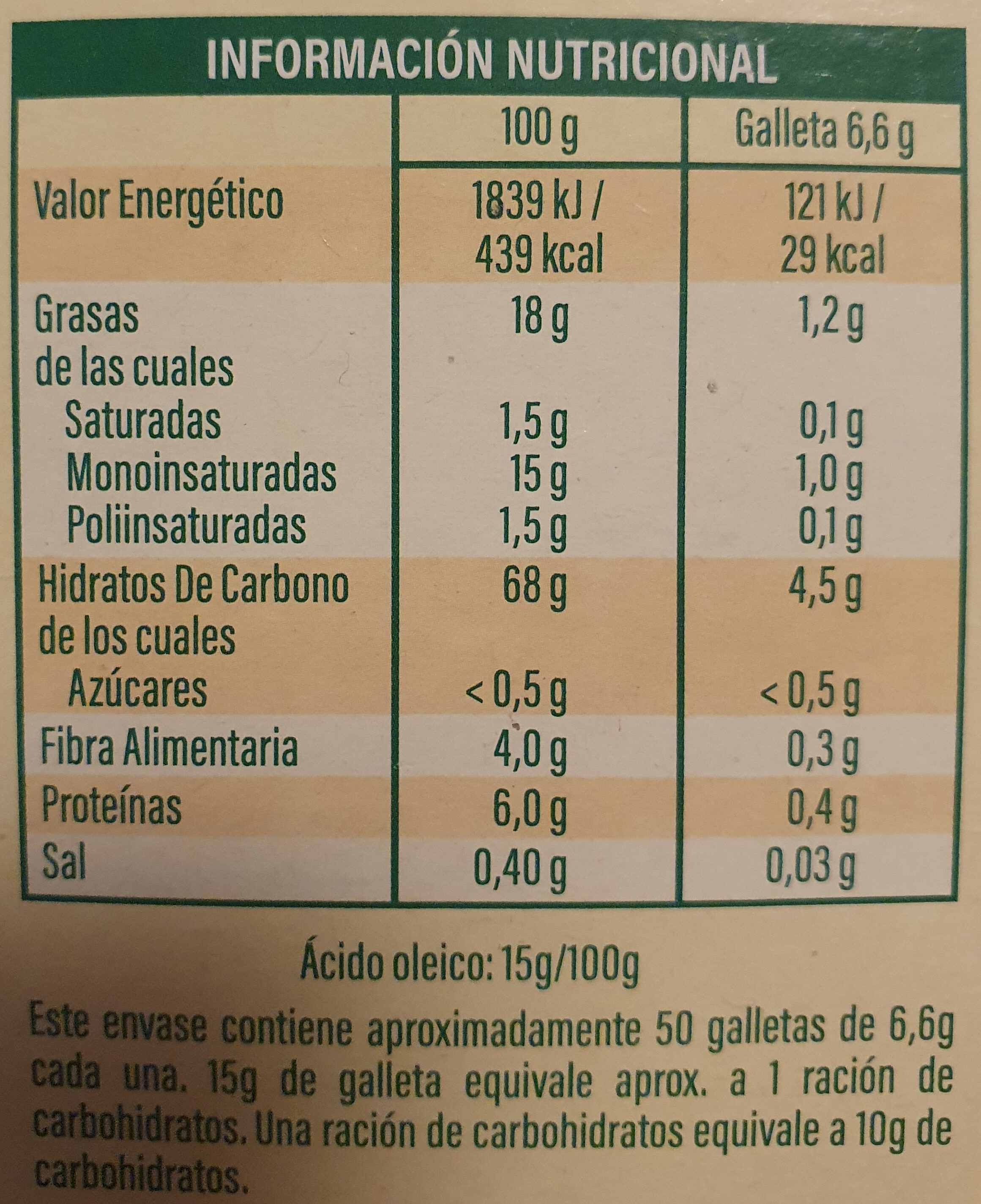Doradas al horno sin azúcares - Gullón - 330 g (2 x 165 g)
This product page is not complete. You can help to complete it by editing it and adding more data from the photos we have, or by taking more photos using the app for Android or iPhone/iPad. Thank you!
×
Barcode: 8410376009408 (EAN / EAN-13)
Common name: Galleta con Edulcorantes sin Azucares
Quantity: 330 g (2 x 165 g)
Brands: Gullón
Categories: Snacks, Sweet snacks, Biscuits and cakes, Biscuits
Labels, certifications, awards:
Vegetarian, Source of fibre, Vegan, European Vegetarian Union, European Vegetarian Union Vegan, FSC, FSC Mix, Green Dot, Nutriscore, Nutriscore Grade B, es:Recicla-amarillo, es:Recicla-azul, pt:Fonte de fibra





Link to the product page on the official site of the producer: https://gullon.es/producto/dorada-al-hor...
Matching with your preferences
Environment
Carbon footprint
Packaging
Transportation
Report a problem
Data sources
Product added on by kiliweb
Last edit of product page on by roboto-app.
Product page also edited by aleene, charlesnepote, cris6869, femmenoire, halal-app-chakib, inf, javiertoti, manu1400, maylord, musarana, neusma, noff2022, nutri-gemma, october-food-facts, openfoodfacts-contributors, openfoodfactsmx, packbot, quechoisir, scanbot, teolemon, thaialagata, tobertet, yogoff.










